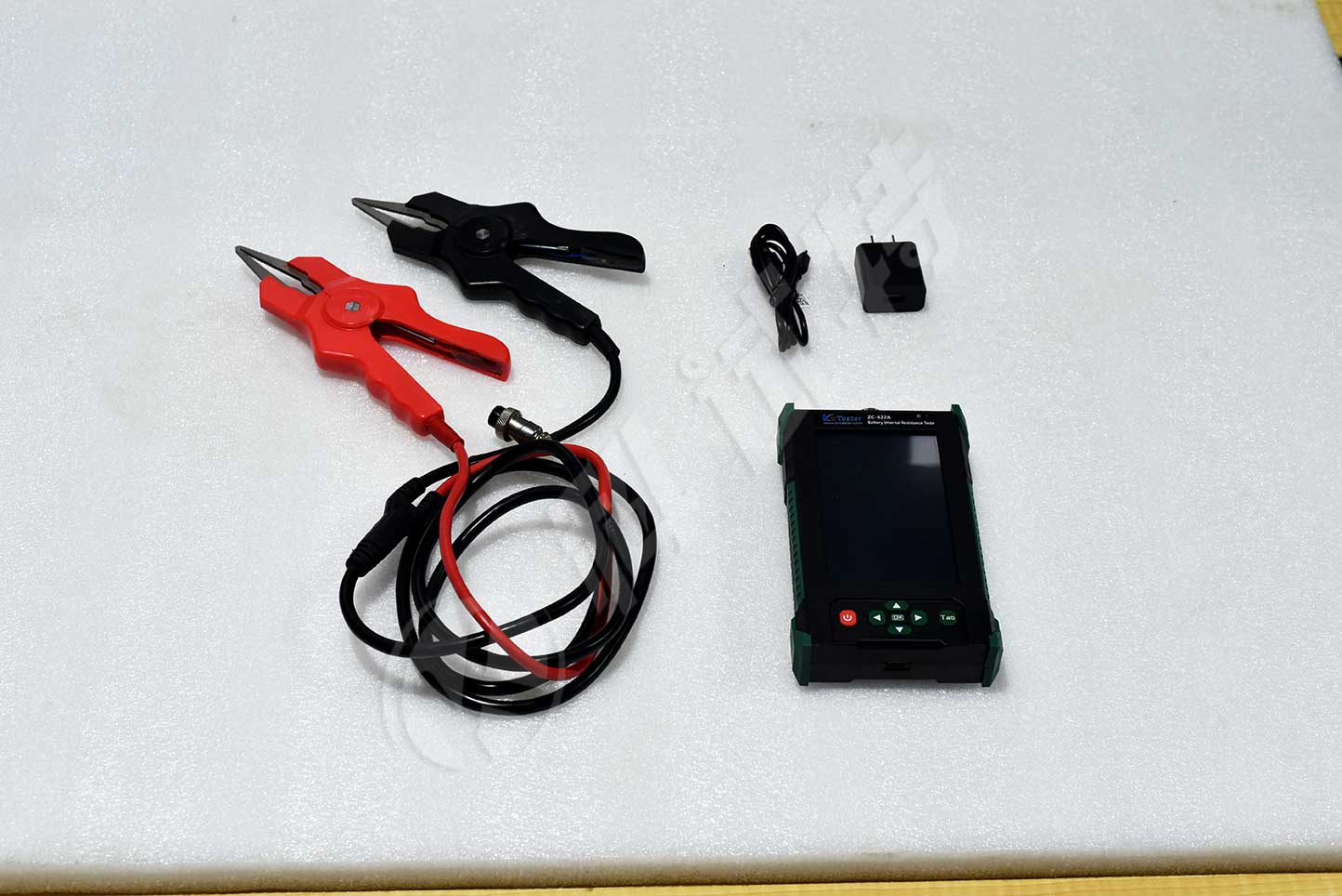The technical requirements for battery internal resistance testing instruments cover multiple aspects such as measurement accuracy, resolution, testing speed, environmental adaptability, electrical safety, electromagnetic compatibility, communication standards, calibration specifications, etc. The following is a specific introduction:
1. Measurement accuracy and resolution
① Internal resistance measurement accuracy: It should reach ± 0.5%, and the measurement error should be controlled within this range under different measurement points and environmental conditions
② Voltage measurement accuracy: ± 0.1%, ensuring accurate measurement of battery terminal voltage. Because voltage is one of the important parameters reflecting the state of a battery, accurate voltage measurement helps to determine the charging and discharging status and health level of the battery.
③ Internal resistance resolution: not greater than 0.01m Ω, capable of accurately measuring small changes in internal resistance. This is of great significance for detecting early performance degradation of batteries, and timely detection of small changes in internal resistance can take corresponding measures to avoid the expansion of battery faults.
④ Voltage resolution: not greater than 1mV, can clearly reflect subtle differences in battery voltage. During the charging and discharging process of a battery, subtle changes in voltage may contain important information, and high-resolution voltage measurement helps to more accurately understand the working status of the battery.
2. Test speed and stability
① Single measurement time: should not exceed 5 seconds to quickly obtain measurement data and improve work efficiency.
② Repeated testing stability: within 3%, ensuring consistency of multiple measurement results. Stable measurement results help to accurately determine the trend of battery performance changes and avoid misjudgments caused by measurement errors.
③ Test signal: Using a high signal of DC 42 A or above to ensure testing accuracy, high signal testing can effectively resist ripple interference in the battery testing environment.
3. Environmental adaptability
① Humidity range: In an environment with a relative humidity of 5% -95% (without condensation), the instrument should be able to work normally, and the measurement results should not be affected by humidity. The measurement accuracy should meet the standard requirements. The humidity varies greatly in different usage environments, and the instrument needs to have good moisture resistance to adapt to measurement work under various humidity conditions.
② Temperature range: The working temperature is usually -10 ℃ -50 ℃, which meets the testing requirements of complex environments such as outdoor and computer rooms. Under extreme temperature conditions, the instrument can still operate normally, ensuring accurate measurement of the battery.
4. Electromagnetic compatibility
① Electrostatic discharge immunity: The instrument should be able to withstand ± 8kV air discharge and ± 4kV contact discharge. During the electrostatic discharge test, the instrument should not exhibit misoperation, freezing, or other phenomena. The measurement results should be accurate and the measurement error should not exceed the specified range. Prevent static electricity from damaging the instrument or affecting the accuracy of measurement results.
② Radio frequency electromagnetic field radiation immunity: In the radio frequency electromagnetic field environment of 80MHz -1000MHz, with a field strength of 10V/m, the instrument should be able to work normally, and the measurement performance should not be affected. The measurement results should meet the standard requirements. To avoid interference from radio frequency electromagnetic fields on the instrument and ensure the reliability of measurement results.
③ Electrical Fast Transient Pulse Group Immunity: The instrument should be able to withstand interference from electrical fast transient pulse groups of ± 2kV (power line) and ± 1kV (signal line). During the test, the instrument should not malfunction and the measurement data should be accurate and reliable. Improve the anti-interference ability of instruments in complex electromagnetic environments.
④ Surge immunity: For power lines, the instrument should be able to withstand ± 4kV surge impact; For signal lines, they should be able to withstand ± 2kV surge impact. After the surge test, the instrument should be able to work normally and all performance indicators should meet the standard requirements. Protect the instrument from damage caused by surge voltage and ensure its safe operation.
5. Communication function
① Communication interface: The instrument should have standard communication interfaces such as RS232, RS485, or Bluetooth. The electrical characteristics of communication interfaces should comply with relevant standards, such as the signal level of RS232 interface should comply with EIA 232 standard, and the signal level of RS485 interface should comply with EIA 485 standard. Facilitate data transmission and communication with the upper computer or other devices.
② Communication protocol: The instrument should support universal communication protocols such as Modbus protocol. The transmission of communication data should be accurate and reliable, and the bit error rate of data transmission should not exceed 10 ^ -6. The communication rate should be adjustable, with common communication rates including 9600bps, 19200bps, 38400bps, etc. The instrument should be able to operate stably at the set communication rate. Realize efficient and accurate communication between instruments and upper computers, facilitating centralized management and analysis of data.
6. Calibration requirements
① Calibration cycle: The instrument should be calibrated regularly, with a calibration cycle of generally one year. In the process of use, if abnormal measurement results are found or there are doubts about the measurement accuracy, calibration should be carried out in a timely manner. Ensure that the measurement accuracy of the instrument always meets the standard requirements.
② Calibration method: Standard calibration equipment should be used for calibration, such as standard resistance boxes, standard voltage sources, etc. The calibration process should be carried out in accordance with the calibration instructions of the instrument to ensure the accuracy of the calibration results. The calibration results should be recorded, and the calibration record should include information such as calibration date, calibration equipment, calibration personnel, calibration data, etc. Calibration qualified instruments should be labeled with a calibration qualified label, which should indicate the calibration validity period.

The ZC-422A intelligent battery internal resistance tester adopts the most advanced AC discharge testing method, which can accurately measure the voltage and internal resistance at both ends of the battery, and judge the quality of the battery capacity and technical status based on this. Customers can choose the results of internal resistance testing, voltage testing, and capacity estimation of the battery according to their own situation as the basis for internal resistance matching when assembling new batteries; Testing the internal resistance of the battery before and after discharge is used to identify truly outdated batteries.
Kvtester Electronics Technology Co.,Ltd. is a high-tech enterprise specializing in power testing, testing, research and development, production, and sales of testing equipment. It has been engaged in the electrical testing industry for many years, and its products are of high quality. We welcome customers to come and purchase. Service hotline: 0086-27-81778799, to learn more, visit the official website: www.kvtester.com





